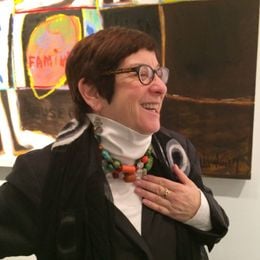The Art of Aging
'Art + Medicine: Healthy Aging,' a new Twin Cities PBS program, offers a positive prescription for older adults
Ageism is a global challenge. Living longer is a given. Living well the goal.
By the beginning of the next century, Statista projects that almost 30% of the world population will be 60 or older. According to the 2020 U.S. Census Bureau report, 55 million Americans are already over the age of 65.
For many people 60 or older, living well also means living creatively and prioritizing opportunities to stay healthy, engaged and purposeful.
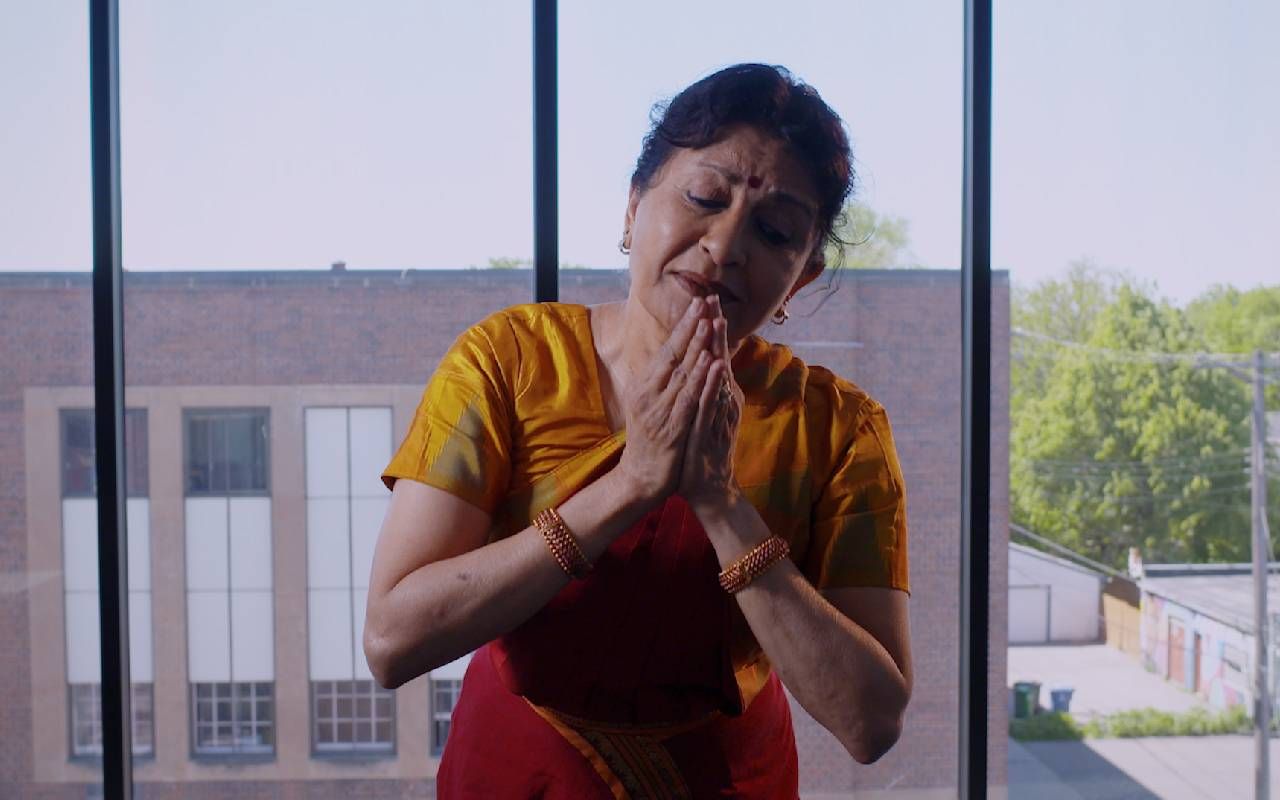
A program on Twin Cities PBS (where Next Avenue is based) spotlights a positive prescription for aging well by showcasing the lives and works of an array of Twin Cities artists. The "senior" members of the program's "creative class" are poster children in the fight against ageism.
A Love for the Arts
"Art + Medicine: Healthy Aging" on TPT Originals, features musical interludes and dance performances as part of a mix of short face-to-face interviews, poetry films and dramatic readings by a selection of Twin Cities art-makers well into their "twilight" years.
"I love collaborating with fun, creative people."
A co-production with the University of Minnesota's Medical School and the Center for the Art of Medicine, "Art + Medicine" is the brainchild of a curatorial team and family practitioner Dr. Jon Hallberg, who shares sensibilities and talents with the artists they have assembled.
"I love collaborating with fun, creative people," Hallberg said during an interview at the Mill City Clinic in Minneapolis, where he is medical director. Germane to his role with "Art + Medicine," Hallberg is also a medical specialist for members of the Minnesota Orchestra, the Guthrie Theater, Minnesota Opera and the St. Paul Chamber Orchestra. He is also well known as a medical analyst on Minnesota Public Radio's "All Things Considered."
Born out of his love of the arts and deep connections to the local performing arts communities, Hallberg founded, directed and hosts "Hippocrates Cafe," the precursor of this television series. "Hippocrates Cafe" has mounted live performances from various Twin Cities locations.
"I wanted to explore health care topics using professional actors and musicians to translate words — poetry, nonfiction, historical document, et cetera — into something powerful when read or performed to an assembled audience," he said.
Components of Healthy Aging
Twin Cities PBS (TPT) opted to do a series of broadcasts based on the "Hippocrates Cafe," rebranding it as "Art + Medicine." The first, "Reflections on the Pandemic," aired during the COVID-19 shutdowns; the second, "Speaking of Race," recently won an Upper Midwest Emmy and was picked up nationally by American Public Television. "Healthy Aging" is the third of what will be a continuing series, with a fourth episode, "Disability," queued up for winter.
"Healthy Aging" opens with Hallberg and his co-host, internal medicine colleague Dr. Tseganesh Selameab, introducing the John A. Hartford Foundation's "4Ms," a framework designed to be used by clinicians to discuss aging with their patients. (The John A. Hartford Foundation is a funder of Next Avenue.)
Standing for "What Matters," "Medication," "Mentation" and "Mobility," the 4Ms are an entry point around which the program is organized, addressing the big-picture question of how to talk about aging and about ageism.
Stay Connected and Contribute to Society
Throughout "Healthy Aging," guest artists present patient-focused perspectives on what matters most. As local author Marcie Rendon notes, "Much attention is given to how to stay youthful instead of how to age in a healthy way."
Rick Shiomi, co-artistic director of Full Circle Theater, asks, "What are the limits of what I can do in a healthy way?"
Various guest artists suggest that "staying connected, being engaged, remaining meaningful and continuing to contribute to society" are the top considerations for aging well.
During a dramatic reading of Mary Oliver's poem "When Death Comes," local actor Candace Barrett Birk, who has appeared in many Twin Cities theater productions, accentuates the final line: "I don't want to end up simply having visited this world." Actor, poet and poem stress that the main point is how we live, not simply living longer.
Accept the Realities of Aging
The potential loss of cognitive ability looms large in the collective psyche of humans. It is perhaps the most frightening, even terrifying aspect of aging.
A compelling performance by film and stage actor Raye Birk, a Guthrie veteran, underscores this fear. The camera follows the 79-year-old Birk as he is guided through the hallways of a medical clinic and seated on an examination table. The camera lingers for a moment on his hands, hands with their own story to tell. Then, the camera pans to an extreme close-up, capturing every crag and crevice of his aging face. Looking directly into the camera, Birk delivers the monologue from Shakespeare's "King Lear," act 4, scene 7.
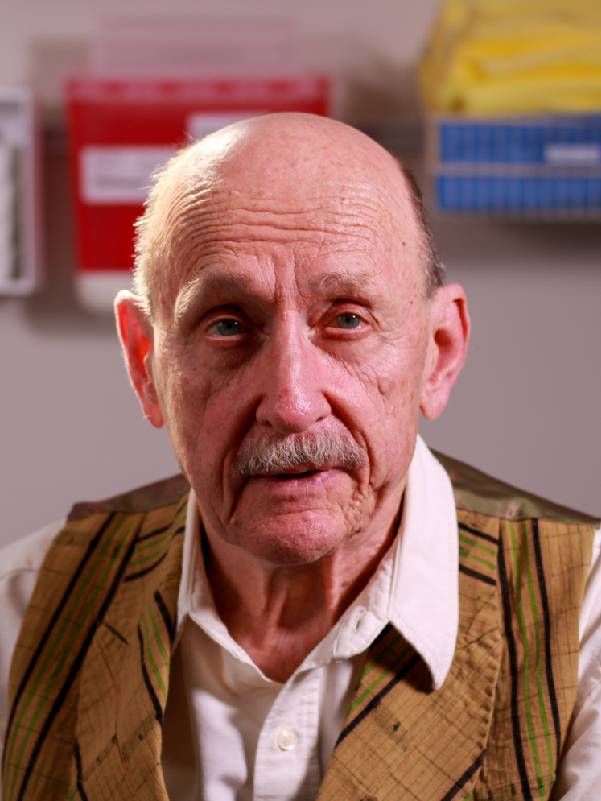
Pray, do not mock me.
I am a very foolish fond old man,
Fourscore and upward, not an hour more nor less;
And, to deal plainly,
I fear I am not in my perfect mind ...
Birk's precise delivery from this modern, sterile exam room is riveting. The soliloquy conjures the universal horror and shame evoked by the specter of dementia. In direct opposition to the message, the aged actor's mastery of his lines packs a punch.
The performance is a testament to the impact sought by overlapping arts and medicine to translate complexity.
Birk remarks in a phone interview about how fortunate he feels to be a part of the "Healthy Aging" program. "My wife Candace and I have done dozens of live performances as part of Jon's 'Hippocrates Cafe' series," he said. "We are honored for the opportunity to continue that creative relationship in this expanded format."
Birk then adds a vital personal perspective about how aging and creativity interconnect, explaining that "as an actor, I am my own instrument. It's my voice, my body, my emotions that I must rely on. As a result, my artistic expression is impacted very directly by the realities of aging."
Paradoxically, meeting the demands of their crafts requires artists to stay strong, capable and flexible as they grow older. Birk observes that while "there are things that my body and voice are not able to do any longer, there's no doubt that the task of having to learn lines has kept my mind active as well."
Keep Moving to Stay Fit
In a nod to the power of movement to keep aging minds and bodies fit, Hallberg recites a charming, almost sing-song rhyme on camera: "Motion is the lotion and resting is rusting."
"My interpretive style has grown with age, with my understanding of life, and of how to express, observe and emote in a very natural way."
As if interpreting this lesson, Ragamala Dance Company founder, Ranee Ramaswamy performs Bharatanatyam, one of five classical styles practiced in India, with fluidity and grace.
In an interview, Ramaswamy said that her "dance has strong technique, discipline and creativity, performed with subtle and emotional communication … that not only works the body, but the brain."
Ramaswamy makes the case that aging has enhanced her competencies. "My interpretive style has grown with age, with my understanding of life, and of how to express, observe and emote in a very natural way."
Like Raye Birk, she admitted that she has nevertheless had to accept the inevitable limitations imposed by aging by adapting her style, "so that I am still able to perform for audiences."
Leave a Creative Legacy
Twin Cities visual artist Seitu Ken Jones and his wife, poet Soyini Vinelle Guyton, reveal yet another significant aspect of what matters when the wintertime of life begins.
The lifelong partners have been artistic co-collaborators for over 30 years. Their animated dynamic is very much alive onscreen. After Guyton comments about being in the winter of their lives, Jones jubilantly counters with "We're in the mid-to-late fall."
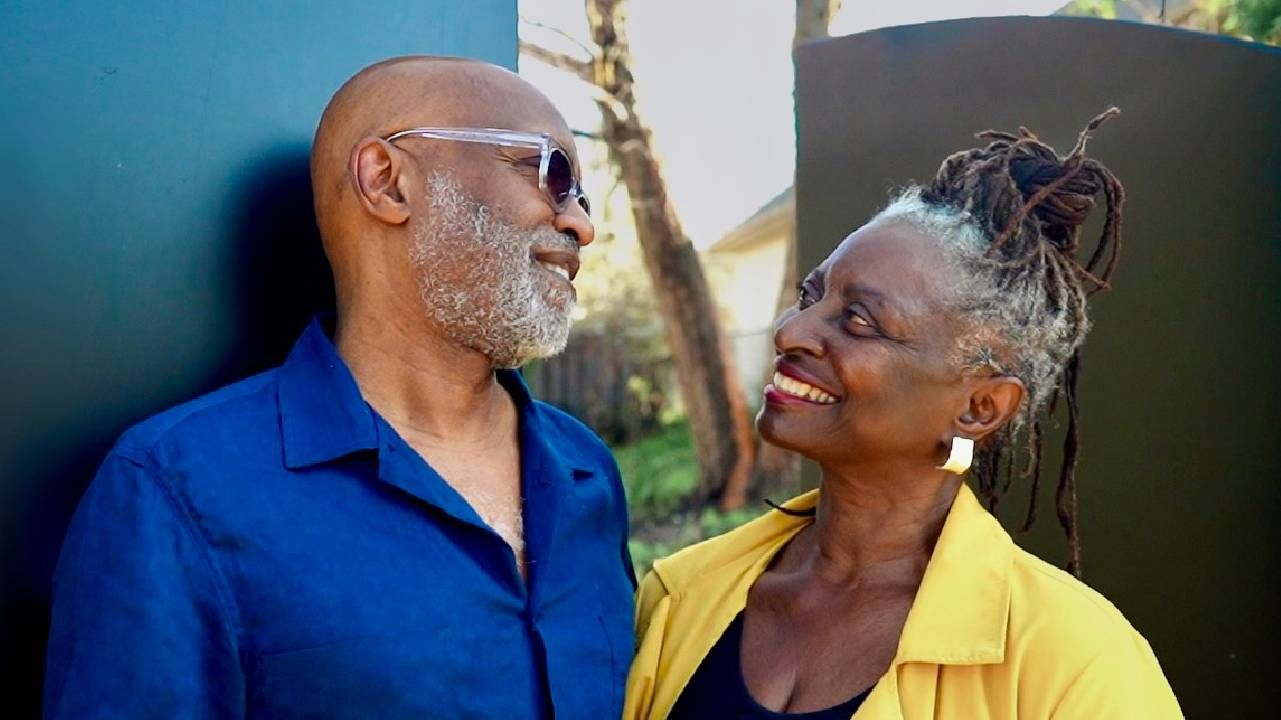
The pair is well-known in St. Paul's Frogtown community and for their free public art collaborations with fellow artist Ta-coumba Aiken. Their "shadow forms with poems" are embedded in the sidewalks of Nicollet Mall and the Minneapolis Sculpture Garden. Jones and Guyton have another poem collaboration along the Metro Green Line light rail, at the Dale Street station in St. Paul. They are physical manifestations of their belief in "the power of the museum of the streets."
"It's important to leave your community more beautiful than you found it," said Jones in the documentary.
This human desire to make a significant difference in the lives of others is central to Jones' and Guyton's artistic mission.
Taking the concept of intergenerational community collaboration to another level, Jones and Guyton are busy raising funds to create "The Black Gate," which they call "a space for storytelling, archive-building and legacy-making for artists of color — modeling a practice of place-keeping for histories yet untold."
A New Way to Think About Aging
"In science there's the idea of translational research — finding a way to take basic science, then translating it into clinical ideas to serve humankind," said Hallberg.
"Medicine brings us to center stage in the drama of life — and death," he explained. "Every single day when we enter an exam room, a hospital ward, an operating suite, the emergency department, we're confronted by pain and suffering and fear, tempered and offset by moments of tremendous joy. The exam room is a confessional — and what an honor and burden that is."
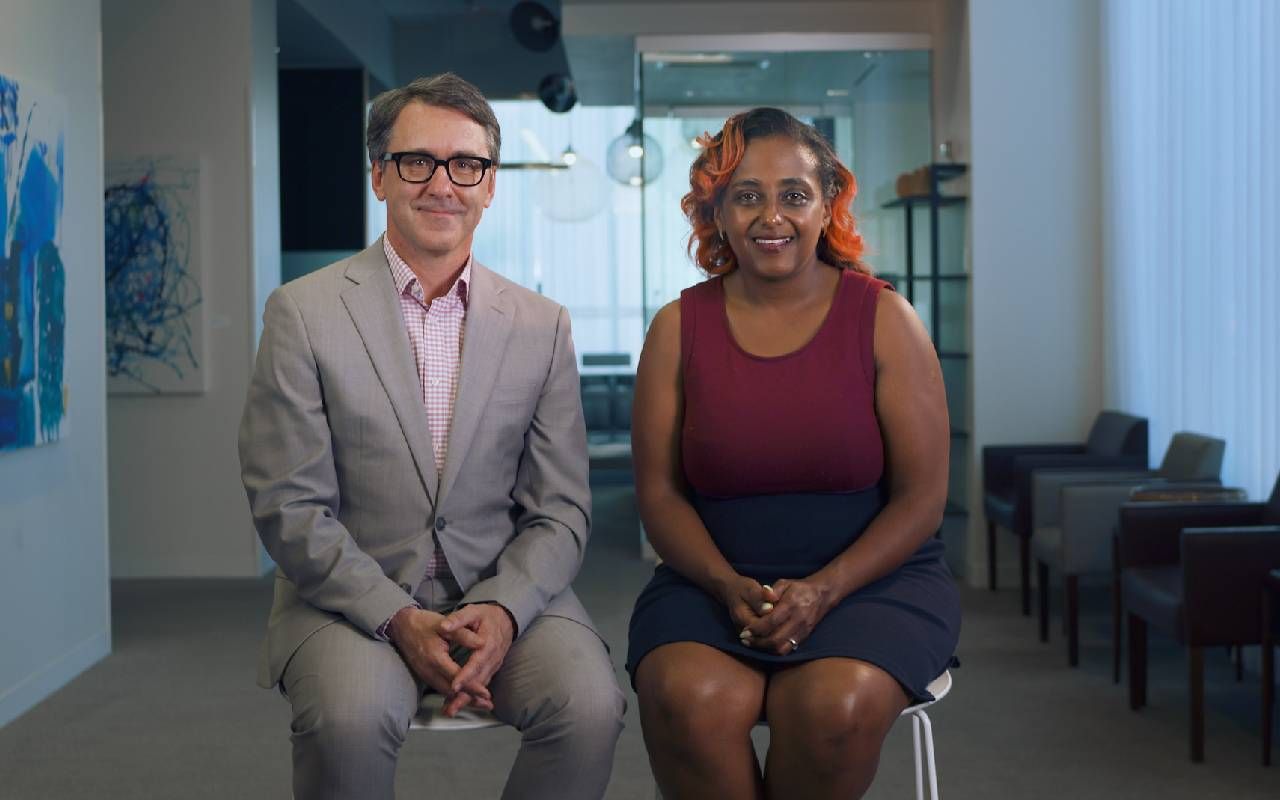
"Healthy Aging," brings this drama to center stage, addressing aging with a positive prescription. Its message is timely, universal and ageless.
Beyond older audiences, Hallberg hopes that younger people "watch the show and come away with hope, awe and understanding, and maybe a new way of thinking about aging."
Does Creativity Have an Expiration Date?
I.M. Pei, the renowned Chinese American architect, designed the Rock and Roll Hall of Fame in Cleveland, Ohio at age 78. Cuban-born abstract artist Carmen Herrera was 101 when her show at the prestigious Whitney Museum opened.
"It's important to leave your community more beautiful than you found it."
At age 79, Mick Jagger, who works out at a "dancing gym" daily to prepare for the Rolling Stones brutally physical, hours-long concerts, recently said, "Doing anything high-energy at this age is really pushing it, but that makes it even more challenging."
And therein lies a big clue to aging well: creative individuals are designed to thrive on challenge. The innate, imaginative problem-solving abilities of gifted artists not only keep them young but also healthy.
Experts agree. People who have developed complex lives with multiple interests and talents continue to develop psychological complexity and tolerance for ambiguity, and to thrive creatively, according to Gary Gute, professor and director of the Creative Life Research Center at the University of Northern Iowa.
According to Dr. Bruce Miller, behavioral neurologist and director of the Memory and Aging Center, University of California, San Francisco Medical Center, "while brains inevitably age, creative abilities do not necessarily deteriorate. … the aging brain responds well to art by allowing the brain's two hemispheres to work more in tandem. This ability to use one's creativity throughout a lifetime, and the impact of crystallized intelligence gained from the years of accumulated knowledge and life experiences, help to cultivate the aging, creative brain."
Editor’s note: This story is a collaboration between the Good Life, a publication of the Star Tribune newspaper, and Next Avenue. See more Next Avenue stories, paired with video clips from "Art + Medicine: Healthy Aging," here.
